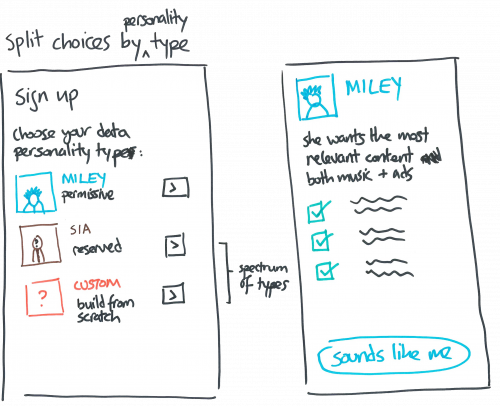How might we...
...make consent more human, intuitive and personal.
Designing to earn people's trust provides a great opportunity to be more playful and humanise our digital services.
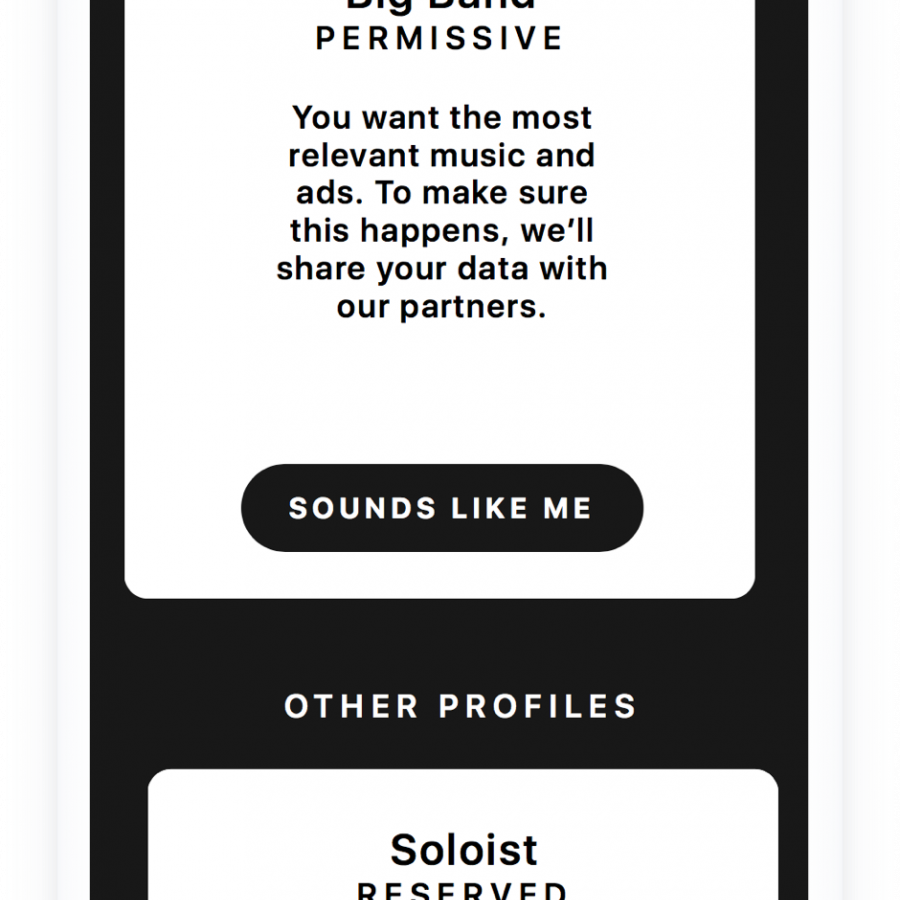
Jam is an online music service that allows people to browse through their favorite artists, share music with friends and discover new bands. In order to provide people with music they love and give them relevant recommendations, Jam uses their data. Even people reluctant to share data will not keep them from using Jam, but the service won't be tailored to their tastes.
In order to provide the service, Jam is powered by some of the following data:
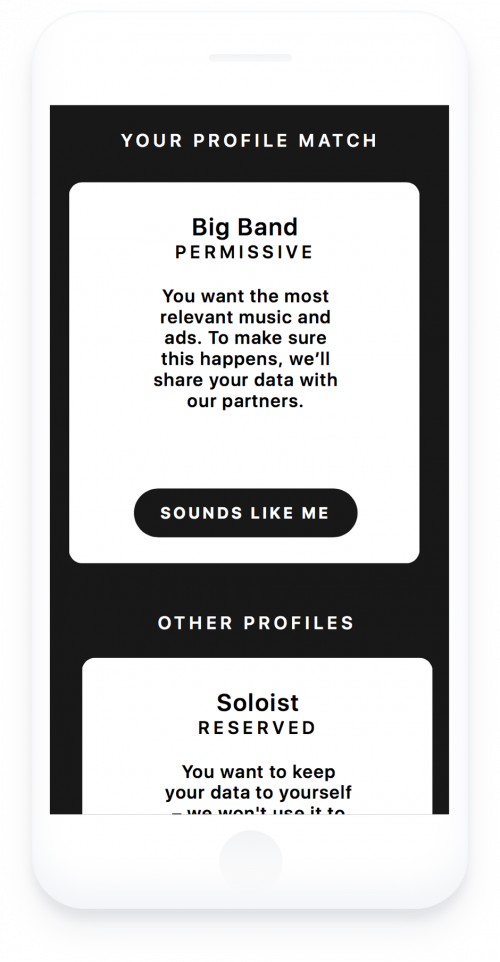
The cross-functional Design Jam team members challenged themselves to create a new way to help users understand and agree to the use of cookies on a specific online music service, while making it feel personalised and fun.
How might we...
...make consent more human, intuitive and personal.
The way Jam asks for consent is quite ingenious! During sign up, Jam asks what kind of music service people are looking for, instead of what data people are willing to share. Using human language, Jam makes the whole process meaningful and personal in a sequenced sign-up flow that asks people about their listening preferences, and what data might be shared as a result, making the value exchange very clear in five steps:
What makes this sign-up special is the role people are given here to be the masters of their experience. Right from the start, a transparent relationship is established by explaining the value of entering their data.
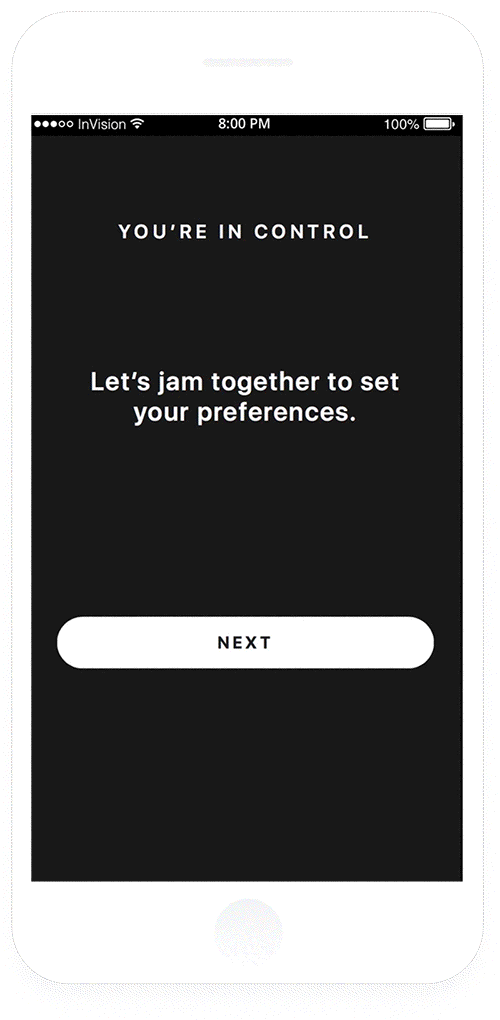
After moving through the sign-up flow, Jam offers people multiple profile preferences for data sharing. Instead of approaching privacy in technical language, Jam allows people to manage permissions in an everyday human, empathetic and music-related way!
Once a profile is selected, privacy settings can be edited at a more granular level. Again, the impact of each choice on the service provided are made very clear.
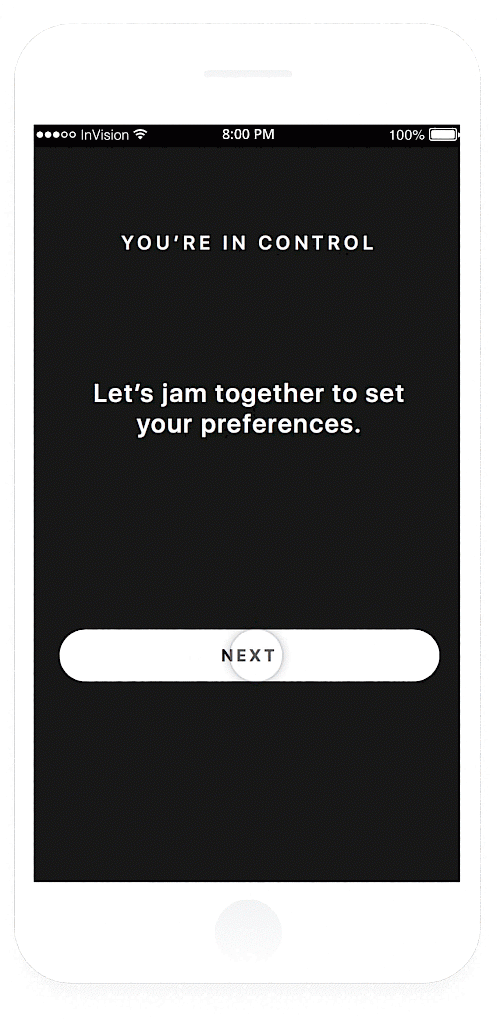
The facilitator at the Design Jam, Elaine Montgomery, Design Manager at Facebook, concluded: 'Jam really sets out to play with the people using the music app to make privacy settings more understandable and fun. Jam could quite easily revert to more common privacy language, but by speaking in musical terms it conveys the concepts in clear, engaging and simple ways.'
How might we build on Jam's ideas to...
